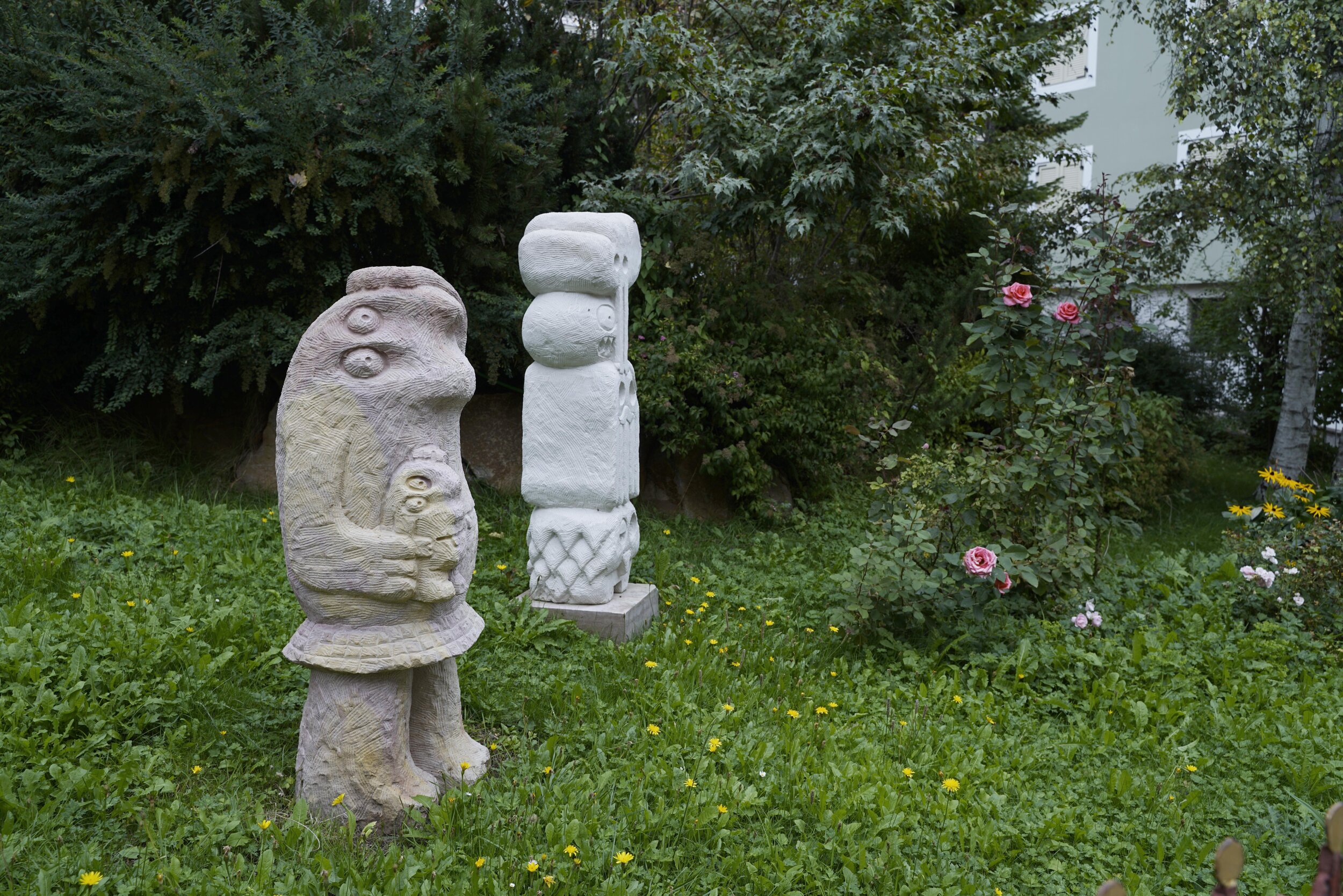
Stefan Rinck
*1973, Germany
lives in and works in Berlin, Germany
EN
The sandstone sculptures by Stefan Rinck (*1973, Germany) are reminiscent of figures from a medieval bestiary or of the gargoyles on cathedral roofs and towers that served to chase away evil spirits and demons. Rinck, who also studied German literature and philosophy, finds his sources of inspiration in various epochs of art, in mythology and in the worlds of make-believe, humorously combining them with contemporary, comic-like imagery. Today, Stefan Rinck places them on pedestals or on the floor positioning them in military formations alongside humanoid generals and re-endues them with their demonic potentials, which have been suppressed under the modern condition. As true swindlers, the animals and figures always strive for more than their origin allows them, as a metaphor for the evolution of man. In possession of a self-conscious mind, just like humans, they have been expelled from paradise. The sculptures are eager to adopt intellectual symbols: pointed hats as regalia of scholarship or alchemy, the cross as a symbol of morality, the robe as a sign of profane power and have a vision to defeat man using his very own means.
IT
Le sculture in pietra arenaria di Stefan Rinck (*1973, Germania)ricordano le figure di un bestiario medievale o i gargoyles sui tetti delle cattedrali e delle torri che servivano a scacciare gli spiriti maligni e i demoni. Rinck, che ha studiato letteratura e filosofia tedesca, trova le sue fonti di ispirazione in varie epoche dell’arte, nella mitologia e nei mondi della finzione, combinandole umoristicamente con immagini contemporanee e comiche. Stefan Rinck li posiziona su piedistalli o sul pavimento collocandoli in formazioni militari accanto a generali umanoidi e restituendo loro quella potenzialità demoniaca dimenticata in epoca moderna. Da veri imbroglioni, gli animali e le figure ambiscono a ottenere più di quanto la loro origine permetta loro, costituendo così una metafora dell’evoluzione dell’uomo. Consapevoli di se stessi, proprio come gli esseri umani, sono stati espulsi dal paradiso. Le sculture bramano simboli intellettuali: i cappelli appuntiti come regalia della dottrina o dell’alchimia, la croce come simbolo di moralità, la veste come segno di potere profano – e progettano di sconfiggere l’uomo con i suoi stessi mezzi.
DE
Die Sandsteinskulpturen von Stefan Rinck (*1973, Deutschland) erinnern an Figuren mittelalterlicher Bestiarien oder die Wasserspeier, wie sie auf den Dächern von Kathedralen und Türmen verwendet wurden, um böse Geister und Dämonen zu vertreiben. Rinck, der auch Germanistik und Philosophie studiert hat, findet seine Inspirationsquelle in verschiedenen Kunstepochen, Mythologien und den Traumwelten der Belletristik, welche er auf humorvolle Weise mit zeitgenössischen, comicartigen Gestalten und Formen kombiniert. Wie aus ihrer Zeit gelöst stellt Stefan Rinck seine Skulpturen entweder auf Sockeln oder direkt auf den Boden. Er reiht sie wie menschenähnliche Generäle in militärischen Formationen, um ihnen ihr dämonisches Potenzial zurückzugeben, das in unserer modernen Welt vergessen wurde. Als sprichwörtliche „Schwindler“ streben seine Figuren und Tiergestalten immer nach mehr, als es ihnen ihrer Herkunft nach erlaubt ist, und verstehen sich als Metaphern für die Evolution des Menschen, im Bewusstsein ihrer selbst, genau wie die Menschen, die aus dem Paradies vertrieben wurden. Deswegen streben die Skulpturen danach, sich intellektuelle Symbole anzueignen, wie z.B. spitze Hüte als Insignien der Gelehrsamkeit und Alchemie, Kreuze als Symbole der Moral, oder Gewänder als Zeichen profaner Macht, um ihre Vision zu speisen, den Menschen mit seinen ureigenen Mitteln zu besiegen.


